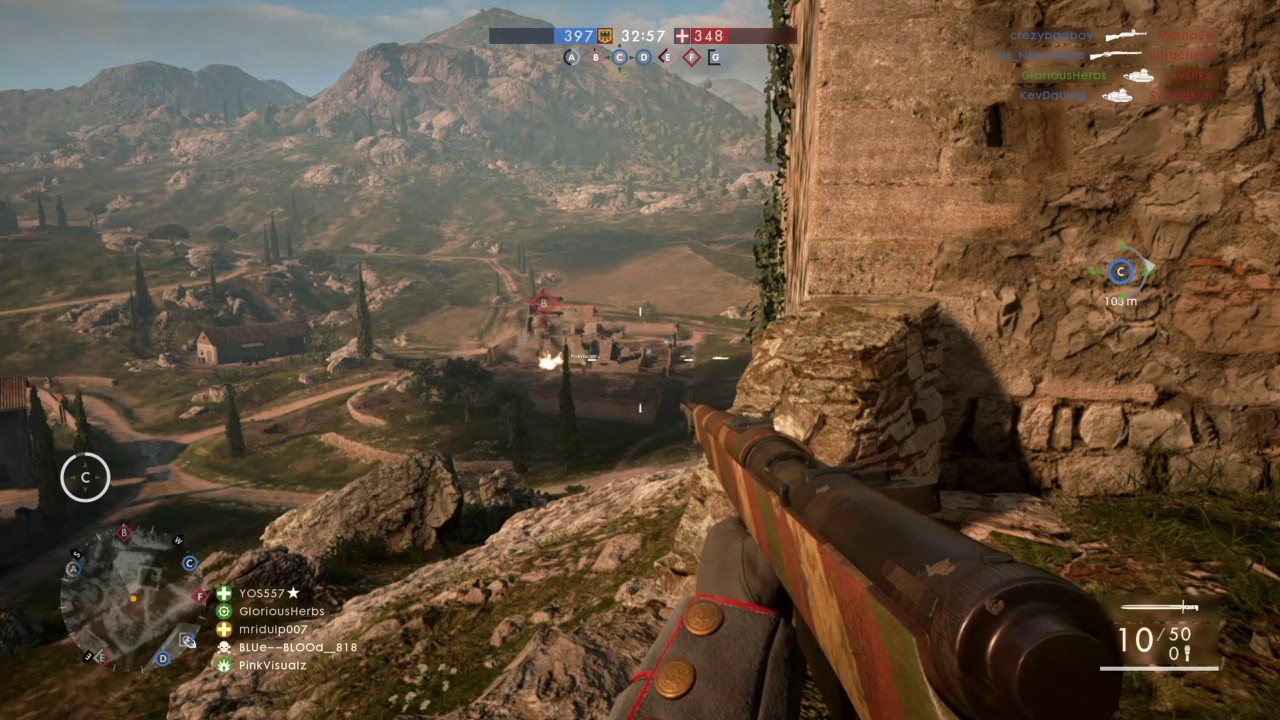How to Spot Enemies in Battlefield 1: Mastering the Art of Reconnaissance
Battlefield 1, developed by DICE and published by Electronic Arts, has captivated gamers worldwide with its immersive World War I setting and intense multiplayer battles. One of the critical skills for any Battlefield 1 player is the ability to spot enemies effectively. In this comprehensive guide, we will explore various techniques and strategies to help you spot enemies in Battlefield 1 like a pro. Whether you are a seasoned veteran or a newcomer to the game, these tips will undoubtedly enhance your gameplay.
1. Understanding the Basics of Enemy Spotting:

Understanding the Basics of Enemy Spotting
To spot enemies effectively in Battlefield 1, you must first understand the basics. Pressing the spot button (typically the Q key on PC or the R1 button on consoles) while aiming at an enemy will mark them on the mini-map and notify your teammates. This simple action can make a significant difference in your team's success.
2. Optimize Your Mini-map Awareness:

Optimize Your Mini-map Awareness
Your mini-map is a vital tool for spotting enemies. Adjust your mini-map settings to maximize its effectiveness. Increase the map size and transparency to have a clearer view of enemy positions. Keeping an eye on the mini-map will help you anticipate enemy movements and locate threats.
3. Use Binoculars and Periscopes:
Certain classes, such as the Scout and Tank Hunter, have access to binoculars and periscopes. These tools allow you to spot enemies from a safe distance without revealing your position. Utilize these gadgets to identify threats and relay crucial information to your team.
4. Spotting from Vehicles:
When operating vehicles like tanks and airplanes, spotting becomes even more critical. Use the spot button to mark enemy infantry, vehicles, and even aircraft. This will assist your team in coordinating attacks and defending against threats effectively.
5. Spotting Flares:
As a Scout class player, you have access to spotting flares. These flares illuminate the battlefield, revealing enemy positions within their radius. Deploy flares strategically in high-traffic areas to gain a tactical advantage.
6. Spotting Gadgets:
Various gadgets and tools can help you spot enemies. Equip gadgets like the Trench Periscope or Spotting Scope, which provide enhanced spotting capabilities. These gadgets offer a zoomed view and the ability to spot enemies more precisely.
7. Communication is Key:
Effective communication with your team is essential for spotting enemies. Use voice chat or text chat to relay enemy positions, especially when you spot a group of foes or a high-priority target. Coordinated teamwork can lead to victory.
8. Flank and Surprise Your Enemies:
Sometimes, the best way to spot enemies is by getting behind enemy lines. Flanking maneuvers can catch opponents off guard, making them easier to spot and eliminate. Be cautious and avoid being spotted yourself.
9. Learn Map Awareness:
Familiarize yourself with the maps in Battlefield 1. Knowing the terrain, key locations, and popular hiding spots will enable you to predict where enemies might be lurking. This knowledge is invaluable for spotting enemies effectively.
10. Stay Vigilant:
In the chaos of battle, it's easy to become overwhelmed. However, maintaining constant vigilance is crucial for spotting enemies. Keep your eyes peeled for movement, listen for footsteps, and be ready to spot foes at a moment's notice.
Mastering the art of spotting enemies in Battlefield 1 is a skill that can turn the tide of battle in your favor. By understanding the basics, optimizing your mini-map awareness, utilizing gadgets, and communicating effectively with your team, you can become a formidable force on the battlefield. Practice these techniques, and soon you'll be spotting enemies like a seasoned veteran, contributing to your team's success and achieving victory in the trenches of World War I.